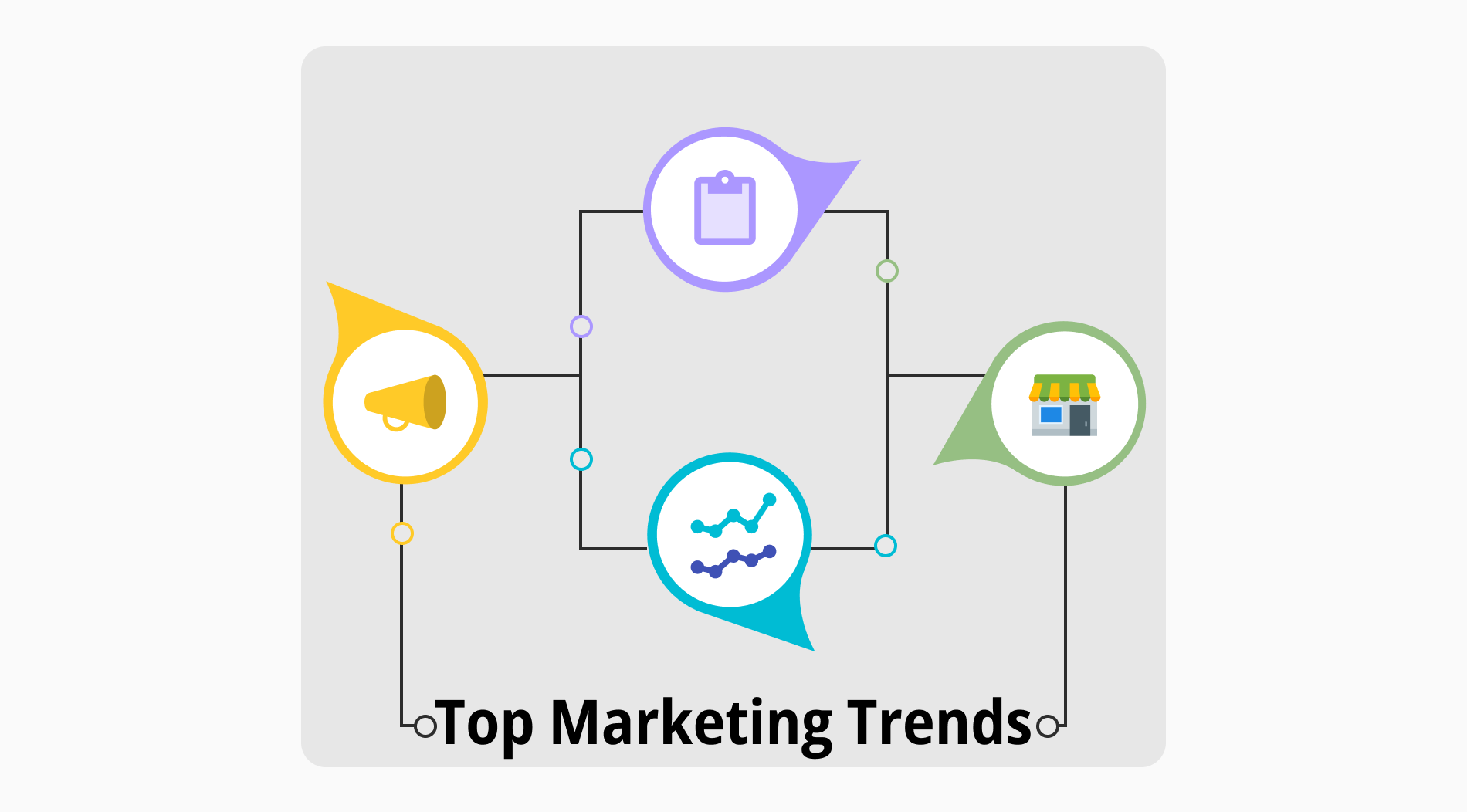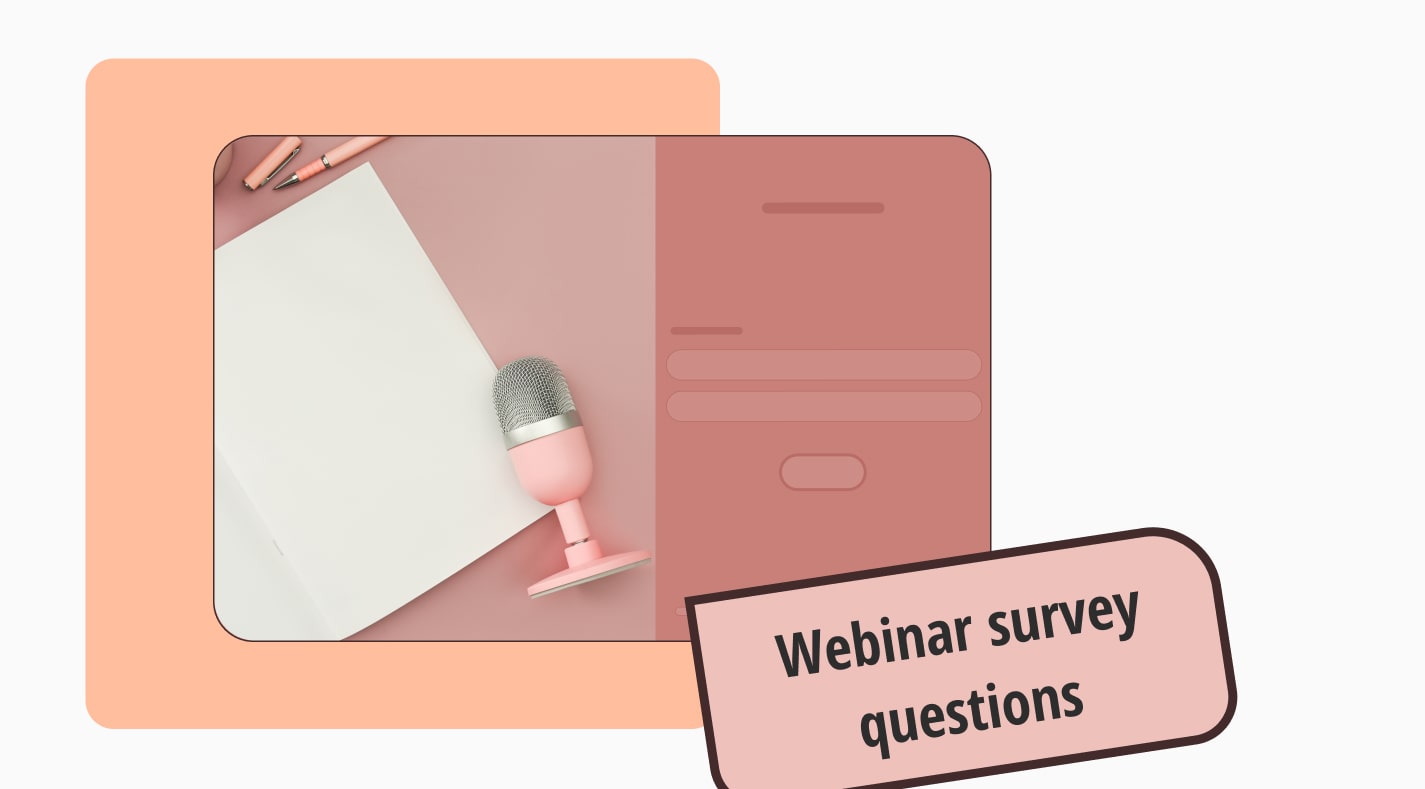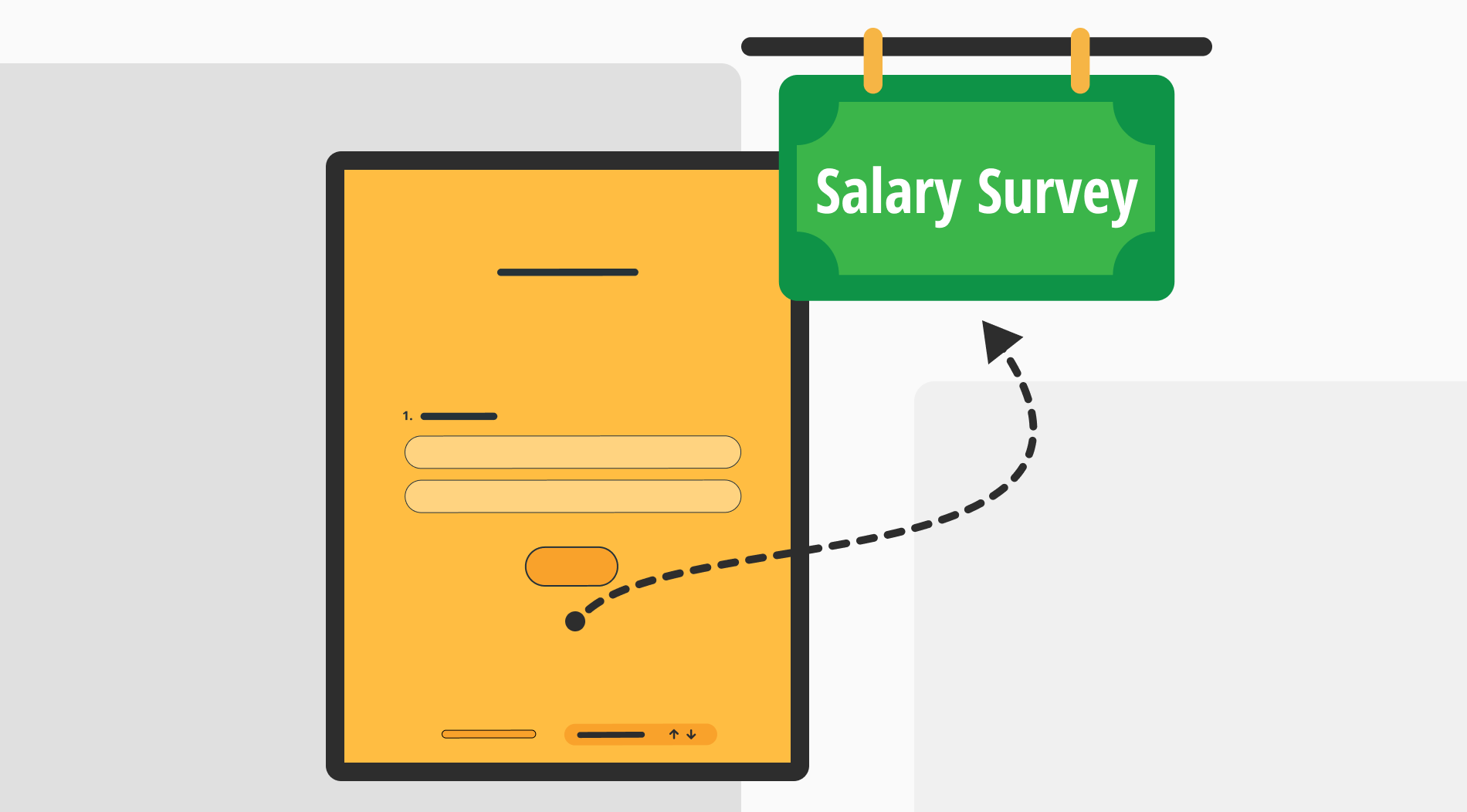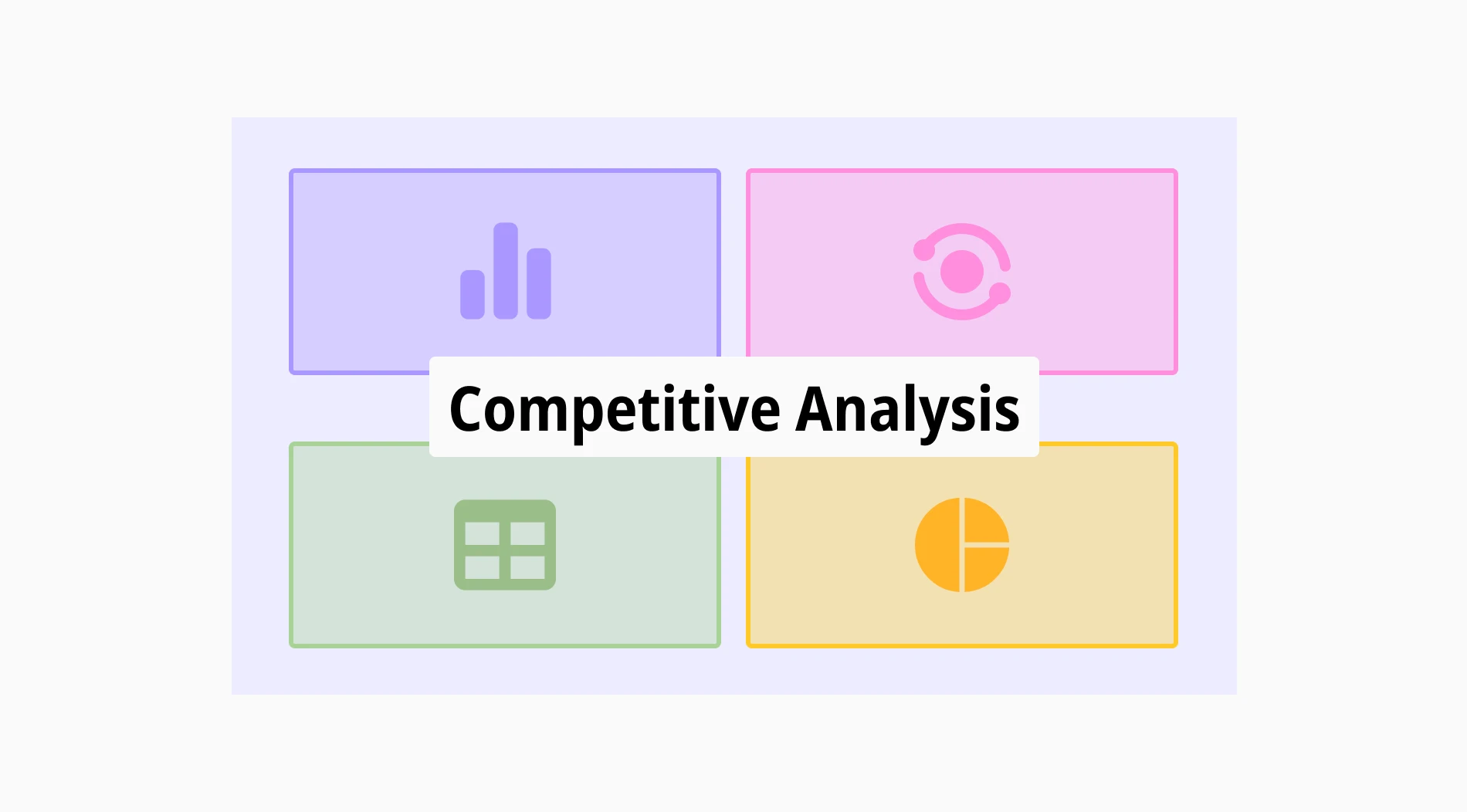
In today’s fast-paced business world, there are many tools that are essential for your business’ success. They can help your company understand its market position, identify opportunities, and stay ahead of your rivals. With accurate insights into competitors’ strategies, strengths, and weaknesses, your business can make informed decisions and drive growth. Embracing these tools can give your business the competitive edge it needs.
Today, we will explore one of these tools, competitive analysis, in-depth. We will define what it is and its significance in various business contexts. We will also discuss when it is crucial to use competitive analysis and provide a step-by-step guide. Furthermore, we will share real-life examples, helpful templates, advantages/drawbacks, and FAQs.
What is a competitive analysis?

Competitive analysis is the process of evaluating your competitors to understand their strengths, weaknesses, strategies, and market positioning.
It involves gathering and analyzing data to make informed business decisions. This analysis helps your business identify opportunities and threats in your industry.
It will also enable the development of strategies to stay ahead of your rivals. You can understand what competitors are doing right and where they are falling short. This way, your business can refine its own strategies to gain a competitive edge. Let’s look at some specific contexts for more clarification:
a. Competitive analysis in business plan
If you want to create a business plan, competitive analysis is crucial. It provides insights into the competitive landscape. It helps you identify market gaps and opportunities. By understanding your competitors’ strengths and weaknesses, you can craft a strategy leveraging your advantages and address potential changes.
This analysis helps in setting realistic goals and benchmarks. A well-conducted competitive analysis ensures that your business plan is robust and realistic for long-term success.
b. Competitive analysis in marketing
In marketing, competitive analysis helps you understand your competitors’ marketing strategies. These include their messages, channels, and tactics. This knowledge lets you put your brand on the spot, identify trends, and create more effective marketing campaigns. You can reach your target audience in an effective manner.
You need to analyze your competitors’ successes and failures. You can refine your own marketing approach to better meet the needs of your customers. This understanding enables you to position your brand effectively, capitalize on market opportunities, and avoid potential drawbacks.
c. Competitive analysis in UX
For UX design, a competitive analysis framework involves evaluating your competitors’ user experience to identify areas for improvement. You need to understand how your competitors design their interfaces and engage users. Thus, you can create a more satisfying user experience that meets or exceeds industry standards.
Competitive analysis helps identify trends and user preferences. When you leverage these insights, you can enhance your UX design and make it more user-friendly. This new design will align with your customers’ expectations.
When to use a competitive analysis?
Like many other business tools, competitive analysis has its suitable environments. Here, we will give you some contexts to enable you to use this tool more effectively. Understanding these contexts will help you get concrete and positive results for your business:
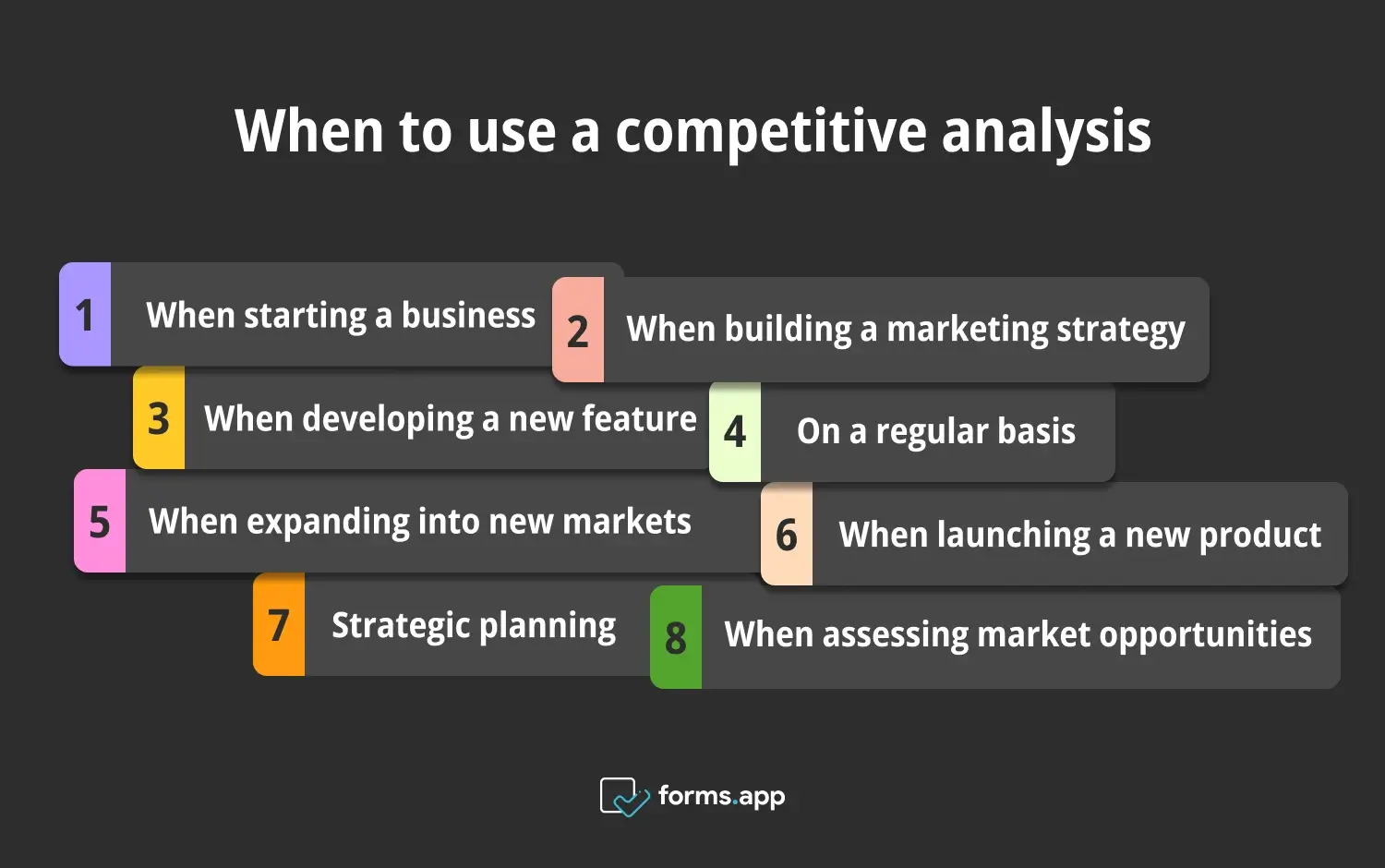
Right times to use the competitive analysis
1- When starting a business
Conducting a competitive analysis is vital if you want to start a new business. It helps you understand the competitive landscape and identify your market gaps. It also helps you determine your value proposition. This knowledge is important for developing a business strategy that stands out in the market.
By analyzing competitors, you can learn from their success (or failure) and know what to expect from you. The analysis provides a clear picture of what you are up against. At a startup stage, it lays a solid foundation for long-term success because it ensures that your business strategy remains informed, realistic, and aligned with market needs.
2- When building a marketing strategy
A competitive analysis is essential when building your marketing strategy. It provides insights into your competitors’ marketing efforts, helping you identify what works and doesn’t. This information allows you to create more effective campaigns and position your brand effectively.
By understanding your competitors’ messaging, channels, and tactics, you can refine your own marketing approach. Competitive analysis in marketing involves examining competitors’ content, social media presence, advertising efforts, and customer engagement strategies. This enables you to put your brand on the horizon, leverage market opportunities, and avoid potential pitfalls.
3- When developing a new feature
When developing a new product feature, competitive analysis helps you understand your competitors' similar features. This knowledge can enable you to innovate and create features to provide more value to your customers. This will, ultimately, give you a competitive edge. By analyzing your competitors’ products, you can identify gaps and opportunities for improvement.
This process helps in ensuring that your new feature is innovative. It also makes sure that it aligns with customer needs and expectations. Competitive analysis at this stage involves examining competitors’ products, features, and user feedback. This is for gaining insights informing your development process.
4- On a regular basis
Regularly conducting competitive analysis ensures you stay updated on industry trends and competitor activities. This continuous monitoring helps you adapt your strategies to changing market conditions and maintain your competitive advantage. You will also be able to seize your new opportunities as they arise. By keeping an eye on your competitors, you can quickly respond to their moves.
Regular competitive analysis involves tracking competitors’ products, marketing efforts, customer feedback, and overall market presence. This ongoing process helps maintain a proactive approach to business strategy. This will also ensure you stay prepared to navigate the dynamic market landscape.
5- When expanding into new markets
When expanding into new markets, conducting a competitive analysis is crucial. It helps you understand the competitive landscape, identify key players, and evaluate their strengths and weaknesses. This information is vital for developing an entry strategy leveraging your advantages and addressing potential challenges.
Competitive analysis in new markets involves examining local competitors, understanding cultural differences, and identifying market gaps. This understanding will assist you in positioning your brand and increase your chances of success in the target markets.
6- When launching a new product
When launching a new product, competitive analysis provides valuable insights into competitors’ offerings, pricing strategies, and customer feedback. This knowledge helps you create a product that stands out in the market and meets customer needs. By analyzing competitors’ strengths and weaknesses, you can identify areas where your product can excel.
Competitive analysis in product launches involves examining competitors’ products, features, pricing, and marketing strategies. You will be able to position your product/services more effectively. You can also increase your chances of a successful product/service launch.
7- Strategic planning
During strategic planning, competitive analysis helps you understand the broader market landscape, identify trends, and evaluate your competitors’ strategies. This information is crucial for developing a long-term business strategy, leveraging your strengths, and addressing potential threats.
Competitive analysis in strategic planning involves examining competitors’ business models, financial performance, and market positioning. This understanding will help you make informed decisions and develop a strategy that ensures sustained growth and profits.
8- When assessing market opportunities
You can use competitive analysis when assessing opportunities. This provides valuable insights into competitors’ strengths and weaknesses, market trends, and customer needs. This knowledge helps you identify opportunities for growth and innovation. You can develop your unique approach and strategies that leverage market opportunities by analyzing competitors' successes and failures.
Competitive analysis in market opportunity assessment involves examining competitors’ products, marketing efforts, customer feedback, and overall market presence. This understanding will enable you to identify gaps and opportunities for sustainable growth. It will also ensure that your business remains competitive and relevant.
How to conduct a competitive analysis (step-by-step)
We have seen in what contexts you can use competitive market analysis in an effective manner. Now, let’s dive into how to conduct the analysis. We will give you 8 steps to follow to complete a successful process. By following these steps, you will be able to understand your competitors as well as the needs of your market:
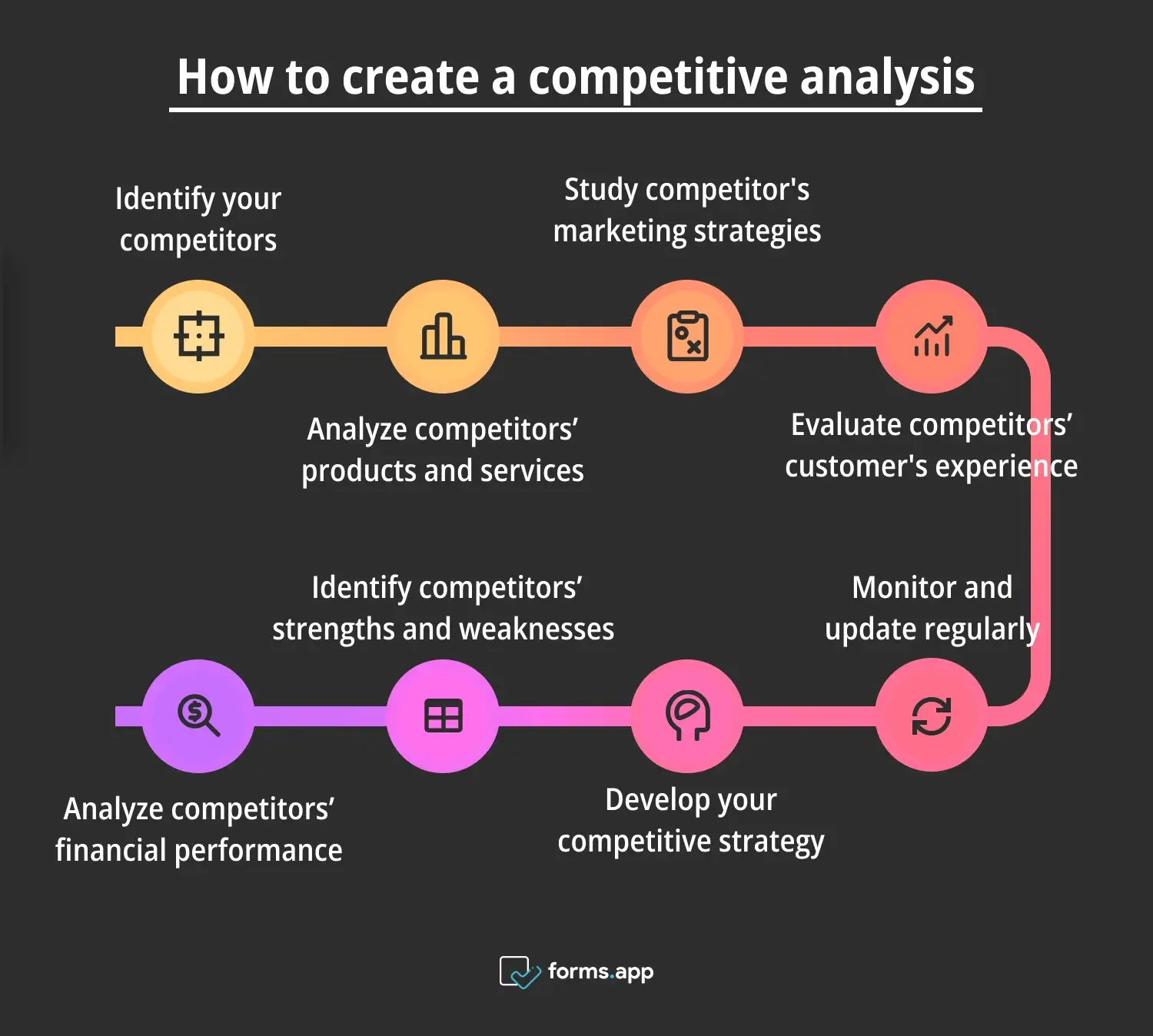
Steps to use a competitive analysis
1- Identify your competitors
Start by identifying who your competitors are. Look for direct competitors who offer similar products or services and indirect competitors who provide alternative solutions to the same problem. This initial step involves researching the market and understanding the landscape. If you know who your competitors are, you can focus your analysis on the most relevant players.
2- Analyze competitors’ products and services
Evaluate the products and services your competitors offer. Look at their features, pricing, and customer reviews to understand their strengths and weaknesses. This will help you identify areas to improve or position your offerings. Analyzing competitors’ products involves examining their product range, quality, and customer satisfaction levels.
3- Study competitor's marketing strategies
Examine your competitors’ marketing strategies, including their messaging, channels, and tactics. Analyze their online presence, social media activities, and content marketing. This will enable you to identify trends and opportunities. It will also assist you in refining your marketing approach and creating more effective campaigns.
Studying competitors’ marketing strategies involves examining their advertising and customer engagement strategies.
4- Evaluate competitors’ customer's experience
Assess how your competitors engage with their customers. Look at their website design, user interface, and customer service. Identify best practices and areas for improvement to enhance your own customer experience. Evaluating competitors’ customer experience includes examining their digital interfaces, customer feedback, and overall user experience.
5- Analyze competitors’ financial performance
If possible, review your competitors’ financial performance. Look at their revenue, profit margins, and market share. This information can provide insights into their business health and growth potential. Analyzing competitors’ financial performance involves examining their marketing reports and industry analysis.
6- Identify competitors’ strengths and weaknesses
Conduct each competitor's SWOT analysis (Strengths, Weaknesses, Opportunities, Threats). Start by summarizing their strengths and weaknesses. Then, identify opportunities and threats. This comprehensive approach helps you understand what drives their success and where they struggle.
Use the SWOT/TOWS (TOWS analysis) to refine your strategy. Do this by leveraging insights from their strengths and addressing their weaknesses. This ultimately enhances your competitive position.
7- Develop your competitive strategy
Based on your analysis, develop a competitive strategy leveraging your strengths and addressing your competitors’ weaknesses. Focus on areas where you can position your business and provide unique value to your customers. Developing a competitive strategy involves setting clear goals. It also includes identifying key performance indicators (KPIs) and creating a detailed action plan.
8- Monitor and update regularly
Remember that competitive analysis is an ongoing process. Continuously monitor your competitors and update your analysis to stay informed about industry changes and new developments. This will help you maintain your competitive edge over time. Monitoring and updating your competitive analysis involves tracking competitors’ products, marketing efforts, customer feedback, and overall market presence.
Examples of competitive analysis
Business tools like competitive analysis are sometimes hard to comprehend when they remain in theory. Below, we will see some examples of competitive analysis (scenarios) from well-known companies that use competitive analysis. By understanding these, you will be able to get a clearer understanding of it and use it in your business:
Example 1: Apple Inc.
Apple conducts a competitive analysis to stay ahead in the technology industry. By evaluating competitors like Samsung and Google, Apple identified trends and customer preferences. This allows them to innovate and improve their products. Apple’s competitive analysis examines competitors’ product features, pricing strategies, marketing efforts, and customer feedback.
This understanding enables Apple to develop products that meet customer needs and stay ahead of the competition. Apple’s competitive analysis also involves monitoring industry trends and emerging technologies. It ensures that they remain at the forefront of innovation. This ongoing process helps Apple maintain its market leadership and achieve sustained growth.
Example 2: Coca-Cola
Coca-Cola performs a competitive analysis to understand its position in the beverage market. Considering competitors like Pepsi, it refines its marketing strategies, product offerings, and pricing to maintain its market leadership. Coca-Cola’s competitive analysis examines the competitors’ marketing efforts, customer engagement strategies, and overall market presence.
This analysis enables Coca-Cola to identify trends and opportunities for growth. Coca-Cola’s competitive analysis also involves monitoring industry trends and customer preferences. It ensures that they remain relevant and competitive in the market. This ongoing process helps Coca-Cola maintain its market leadership and achieve sustained growth.
Example 3: Nike
Nike uses competitive analysis to stay ahead of its competitors in the athletic products market. It studies competitors like Adidas and Puma. Thus, they can identify trends in their product lines and develop marketing campaigns that reach their target audience. Nike’s competitive analysis examines competitors’ product features, pricing strategies, marketing efforts, and customer feedback.
This comprehensive understanding enables Nike to develop products that meet customer needs and stay ahead of the competition. It also involves monitoring industry trends and emerging technologies. This ensures that they remain prominent. The ongoing process helps Nike maintain its market leadership and achieve sustained growth.
Competitive analysis templates for you to use
Every company has its own dynamics and business strategies. Creating a competitive analysis template specifically for your company is beneficial for your business. It will render your efforts more concrete and relevant to your business context. Here are some templates that you can use as a good starting point:
Miro and Figma both offer competitive analysis templates for research and comparison tasks. Miro’s template emphasizes collaborative brainstorming and SWOT analysis to determine your strengths, weaknesses, opportunities, and threats in comparison with the competitors. Figma, on the other hand, has a case-study approach focusing on detailed product design elements and competitor benchmarking.
Tools you need for competitive analysis
To conduct a competitive analysis, you do not need to draw a template on a blank paper the old-fashioned way. There are some very useful and accessible tools at your disposal that you can use. This varies from classical software to readily available website templates. Here are some of them:
Excel
Excel is a versatile tool for competitive analysis. It allows you to organize and analyze data, create charts, and develop comprehensive reports. With Excel, you can easily compare competitors’ statistics and identify trends. Excel features include data organization, chart creation, and report generation.
Semrush
Semrush is a powerful tool for competitive analysis in digital marketing. It provides insights into competitors’ SEO strategies, paid search campaigns, and social media activities. This information enables you to optimize your online presence and stay ahead in the digital landscape. Semrush’s features also include keyword analysis, backlink analysis, and competitor research.
Figma
Figma is also a very valuable tool for competitive analysis. It offers design capabilities enabling sales teams to create visual representations of competitor strategies. With Figma, you can analyze competitors’ design trends and gather insights into user experience. Its real-time collaboration features ensure that all team members stay aligned.
Miro
Miro is a collaborative online whiteboard tool that helps you conduct competitive analysis. Its templates and visualization features make it easy to map the competitors’ strategies and brainstorm ideas. Miro enhances collaboration and improves the analysis process. Miro’s features include real-time collaboration, visualization tools, and templates for organizing and comparing competitors’ data.
forms.app
forms.app is very helpful when it comes to market research and competitive analysis. It allows you to create surveys and collect data on competitors and market trends. This information from these surveys helps you understand market needs and deficiencies.
This will guide your business strategy. Its features include survey creation, data collection, and analysis.
Benefits of competitive analysis
Competitive analysis has various advantages and benefits that stand out among other business tools/frameworks. Let’s take a look at some of these advantages. You will be able to understand how we can benefit from competitive analysis further:
➕Informed decision-making: Competitive analysis provides valuable insights that help businesses make informed decisions. By understanding competitors' strategies, strengths, and weaknesses, companies can develop more effective plans and strategies.
➕Identifying opportunities: Through competitive analysis, businesses can identify market gaps and opportunities. This information allows them to innovate and create unique products or services that meet unmet customer needs.
➕Enhancing marketing strategies: Competitive analysis helps businesses refine their marketing strategies by understanding competitors' tactics and customer preferences. This knowledge enables companies to create more targeted and effective marketing channels.
➕Improving product development: Businesses can identify strengths and weaknesses that inform their product development efforts by analyzing competitors' products. This analysis helps in creating products that are innovative, user-friendly, and aligned with customer needs.
➕Risk management: Competitive analysis helps businesses identify potential threats and develop strategies to mitigate risks. By understanding competitors' moves and market trends, companies can anticipate challenges and respond proactively.
➕Strategic planning: Competitive analysis is essential for strategic planning. It provides a comprehensive understanding of the market and competitors. This helps businesses develop long-term strategies that leverage their strengths and address potential threats.
Drawbacks of competitive analysis
Competitive analysis is a very effective tool. However, like the other models, such as the core competence model, it is not perfect and has some potential pitfalls. Before using it, keep these limitations and drawbacks in mind so that you can use it in the most efficient manner:
➖Time-consuming: Conducting a thorough competitive analysis can be time-consuming. Gathering and analyzing data requires significant effort, which can be a challenge for businesses with limited resources.
➖Potential for inaccurate data: Relying on publicly available information can sometimes lead to inaccurate or outdated data. This can affect the reliability of the analysis and the decisions based on it.
➖Focusing too much on competitors: This pitfall can sometimes lead to a reactive strategy. Businesses may become too concerned with what competitors are doing. They can lose sight of their own unique strengths and opportunities.
Frequently asked questions about the competitive analysis
When one mentions competitive analysis, some common queries come to mind about the subject. Let’s find answers to those questions together and get a clearer understanding of the competitive analysis:
Bir rekabet matrisi, ürünler, özellikler, fiyatlandırma ve pazar konumlandırması gibi rakiplerin çeşitli yönlerini karşılaştıran bir araçtır. İşletmelerin rekabetçi manzarayı haritalandırmasına ve kendilerini geliştirebilecekleri veya konumlandırabilecekleri alanları belirlemesine yardımcı olur. Rekabet matrisi, rakipleri listelemeyi ve onların farklı kriterlerdeki güçlü ve zayıf yönlerini değerlendirmeyi içerir.
SWOT analizi, bir işletmenin güçlü ve zayıf yönlerini, fırsatlarını ve tehditlerini değerlendiren bir araçtır. Rekabet analizini içerse de kapsamı daha geniştir ve hem iç hem de dış faktörlere odaklanır. SWOT analizi, bir işletmenin dahili güçlü ve zayıf yönlerini ve harici fırsat ve tehditlerini değerlendirmeyi içerir.
Rekabetin 5C'si, rekabet ortamını analiz etmek için kullanılan bir çerçevedir. Bunlar Şirket, Rakipler, Müşteriler, İş birlikçiler ve İklimi (Company, Competitors, Customers, Collaborators, and Climate) içerir. Bu çerçeve, işletmelerin pazar konumunu anlamalarına ve başarılarını etkileyen çeşitli faktörlere yönelik stratejiler geliştirmelerine yardımcı olur.
5C çerçevesi şunları içerir:
- Şirketin güçlü ve zayıf yönlerinin analiz edilmesi,
- Rakiplerin stratejilerinin anlaşılması,
- Müşteri ihtiyaçlarının ve tercihlerinin belirlenmesi,
- İş birlikçilerin ve ortaklıkların değerlendirilmesi,
- Genel iş ortamının veya ikliminin değerlendirilmesi.
4 rekabet analizi dört tür rakibin belirlenmesini içerir: doğrudan, dolaylı, potansiyel ve ikame rakipler. Doğrudan rakipler benzer ürünler, dolaylı rakipler alternatif çözümler sunar; potansiyel rakipler pazara girebilir ve ikame rakipler ikame ürünler sunar. Bu dört rakip türünün belirlenmesi, işletmelerin rekabet ortamını daha iyi anlamalarına ve çeşitli tehdit ve fırsatları ele alan stratejiler geliştirmelerine yardımcı olur.
Last notes
In conclusion, competitive analysis is a powerful tool for businesses looking to stay ahead in today’s competitive landscape. You can make informed decisions by understanding competitors’ strategies and identifying market opportunities. You can also improve your offerings and achieve long-term success. Competitive analysis provides valuable insights that help you navigate the complex market landscape.
This article explored the significance of competitive analysis, its application, suitable environments, and useful tools. We have also looked at benefits, pitfalls, and common queries. By leveraging these insights, you can enhance your business strategy and maintain your competitive edge, starting today!
Fatih is a content writer at forms.app and a translator specializing in many text domains, including medical, legal, and technical. He loves studying foreign languages. Fatih especially likes to create content about program management, organizational models, and planning tools.
İçindekiler
- What is a competitive analysis?
- When to use a competitive analysis?
- How to conduct a competitive analysis (step-by-step)
- Examples of competitive analysis
- Competitive analysis templates for you to use
- Tools you need for competitive analysis
- Benefits of competitive analysis
- Drawbacks of competitive analysis
- Frequently asked questions about the competitive analysis
- Last notes



 14 dakikalık okuma
14 dakikalık okuma